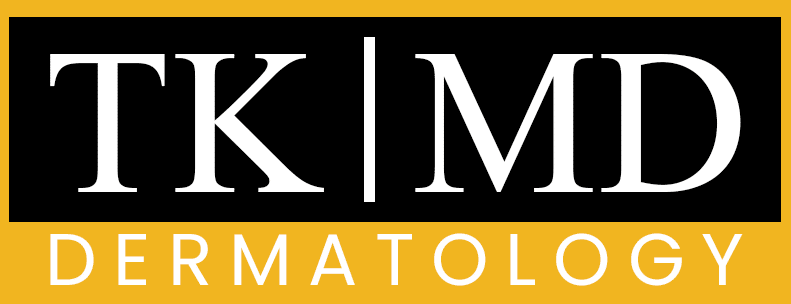Hyperhidrosis is a condition that affects many individuals, leading to excessive sweating beyond what is necessary for thermoregulation. This condition can be both physically uncomfortable and emotionally distressing, impacting our daily lives and social interactions. We often find ourselves in situations where we feel self-conscious about our sweating, which can lead to anxiety and avoidance of certain activities.
Understanding hyperhidrosis is the first step toward managing it effectively and reclaiming our confidence. The condition can manifest in various ways, often categorized into primary and secondary hyperhidrosis. Primary hyperhidrosis typically begins in childhood or adolescence and is localized to specific areas such as the palms, feet, underarms, or face.
In contrast, secondary hyperhidrosis is usually a result of an underlying medical condition or medication and can affect the entire body. By recognizing the nuances of hyperhidrosis, we can better understand our experiences and seek appropriate help.
Key Takeaways
- Hyperhidrosis is a condition characterized by excessive sweating beyond what is necessary for regulating body temperature.
- Causes of hyperhidrosis can include genetics, hormonal changes, and certain medical conditions or medications.
- Symptoms of hyperhidrosis can include visible sweating, frequent sweating, and sweating that interferes with daily activities.
- There are two main types of hyperhidrosis: primary focal hyperhidrosis, which affects specific areas like the hands, feet, and underarms, and secondary generalized hyperhidrosis, which is caused by an underlying medical condition.
- Diagnosis of hyperhidrosis may involve a physical exam, medical history, and tests such as the starch-iodine test or sweat test.
Causes of Excessive Sweating
The causes of excessive sweating can be multifaceted, ranging from genetic predispositions to environmental triggers. In many cases, we may find that our family history plays a significant role in the development of hyperhidrosis. If we have relatives who also experience excessive sweating, it is likely that we may be genetically predisposed to the condition.
This hereditary aspect highlights the importance of understanding our family health history when addressing our own symptoms. Additionally, various factors can exacerbate our sweating episodes. Stress and anxiety are common triggers that can lead to increased perspiration, as our bodies respond to emotional stimuli.
Certain foods, such as spicy dishes or caffeine-laden beverages, can also provoke excessive sweating. By identifying these triggers in our lives, we can take proactive steps to minimize their impact and manage our symptoms more effectively.
Symptoms of Hyperhidrosis

The symptoms of hyperhidrosis extend beyond just excessive sweating; they can also include skin irritation and social anxiety. We may notice that our palms become clammy during stressful situations or that we frequently change clothes due to dampness. This constant battle with sweat can lead to skin issues such as rashes or infections, particularly in areas where moisture accumulates.
Recognizing these symptoms is crucial for us to seek appropriate treatment and support. Moreover, the emotional toll of hyperhidrosis cannot be overlooked. We may find ourselves avoiding social situations or feeling embarrassed about our condition, which can lead to isolation and decreased quality of life.
The psychological impact of living with hyperhidrosis often requires as much attention as the physical symptoms, emphasizing the need for a comprehensive approach to treatment and management.
Different Types of Hyperhidrosis
Hyperhidrosis can be classified into two main types: primary and secondary hyperhidrosis. Primary hyperhidrosis is characterized by localized sweating without any underlying medical condition. It often affects specific areas such as the hands, feet, underarms, and face.
We may find ourselves experiencing this type of sweating during moments of stress or even without any apparent trigger. The localized nature of primary hyperhidrosis can make it particularly challenging for us to cope with socially. On the other hand, secondary hyperhidrosis is associated with an underlying medical condition or medication use.
Conditions such as diabetes, hyperthyroidism, or infections can lead to widespread sweating throughout the body. In this case, it becomes essential for us to address the root cause of the excessive sweating rather than just managing the symptoms. Understanding these distinctions helps us communicate more effectively with healthcare providers and tailor our treatment plans accordingly.
Diagnosis of Hyperhidrosis
Diagnosing hyperhidrosis typically involves a thorough evaluation by a healthcare professional. During our appointment, we can expect to discuss our medical history, symptoms, and any potential triggers we have identified. Our doctor may also perform a physical examination to assess the areas affected by excessive sweating.
In some cases, they might recommend additional tests to rule out underlying conditions that could be contributing to our symptoms. One common diagnostic tool is the starch-iodine test, where iodine is applied to the skin followed by starch. The areas that sweat excessively will turn dark blue, helping to pinpoint the severity and location of our hyperhidrosis.
This process not only aids in diagnosis but also provides us with a clearer understanding of our condition, allowing us to make informed decisions about treatment options.
Treatment Options for Hyperhidrosis

Mild Cases: Over-the-Counter Antiperspirants
When it comes to treating hyperhidrosis, we have several options available that cater to different levels of severity and individual preferences. Over-the-counter antiperspirants containing aluminum chloride are often the first line of defense for many of us. These products work by blocking sweat glands and can provide relief for mild cases of hyperhidrosis.
Severe Symptoms: Prescription-Strength Antiperspirants
For those with more severe symptoms, prescription-strength antiperspirants may be recommended. These formulations contain higher concentrations of active ingredients and are designed for individuals who do not respond adequately to over-the-counter options.
Alternative Treatments: Iontophoresis
If topical treatments prove ineffective, we may explore other avenues such as iontophoresis, which involves using a device that passes a mild electrical current through water and into the skin’s surface to reduce sweating.
Lifestyle Changes for Managing Hyperhidrosis
In addition to medical treatments, making certain lifestyle changes can significantly impact how we manage hyperhidrosis on a daily basis. We might start by wearing loose-fitting clothing made from breathable fabrics like cotton or moisture-wicking materials that help keep us dry. Choosing appropriate attire can make a noticeable difference in our comfort levels throughout the day.
Moreover, practicing stress-reduction techniques such as mindfulness meditation or yoga can help us manage anxiety-related sweating episodes. By incorporating these practices into our routines, we not only address the physical aspects of hyperhidrosis but also cultivate a sense of emotional well-being that can mitigate some of the triggers associated with excessive sweating.
Medications for Hyperhidrosis
For those who require more aggressive treatment options, medications may be prescribed to help control excessive sweating. Anticholinergic medications are commonly used to reduce sweating by blocking the signals from the nervous system that trigger sweat production. While these medications can be effective for many individuals, they may come with side effects such as dry mouth or blurred vision that we need to consider when weighing our options.
Botulinum toxin injections are another innovative treatment option that has gained popularity in recent years. These injections work by temporarily blocking the nerves responsible for activating sweat glands in targeted areas. The effects typically last several months, providing us with significant relief from excessive sweating during that time.
However, it’s essential for us to discuss potential side effects and treatment frequency with our healthcare provider before proceeding.
Surgical Procedures for Hyperhidrosis
In cases where other treatments have failed or if we experience severe hyperhidrosis that significantly impacts our quality of life, surgical options may be considered. One common procedure is sympathectomy, which involves cutting nerves responsible for triggering sweat production in specific areas of the body. While this surgery can provide dramatic results for some individuals, it is not without risks and potential complications that we must carefully evaluate.
Another surgical option is removal of sweat glands in targeted areas such as the underarms. This procedure can offer long-term relief from excessive sweating but requires careful consideration regarding recovery time and potential side effects. Consulting with a qualified surgeon who specializes in hyperhidrosis treatments will help us make informed decisions about whether surgery is the right path for us.
Natural Remedies and Home Remedies for Hyperhidrosis
For those who prefer a more holistic approach to managing hyperhidrosis, several natural remedies and home treatments may offer relief. We might explore herbal supplements such as sage or chamomile, which are believed to have properties that help reduce sweating. Additionally, maintaining proper hydration levels can support overall bodily functions and potentially minimize excessive perspiration.
Another home remedy involves using apple cider vinegar as a natural astringent to help tighten pores and reduce sweat production. Applying diluted apple cider vinegar to affected areas before bedtime may provide some individuals with relief from nighttime sweating episodes. While these remedies may not work for everyone, they offer alternative options worth exploring alongside conventional treatments.
Coping with Hyperhidrosis: Support and Resources
Living with hyperhidrosis can be challenging both physically and emotionally; however, we are not alone in this journey. Seeking support from friends, family members, or support groups can provide us with valuable encouragement and understanding as we navigate our experiences with excessive sweating. Connecting with others who share similar challenges allows us to exchange tips and coping strategies while fostering a sense of community.
Additionally, numerous online resources and forums are dedicated to hyperhidrosis awareness and support. These platforms offer information on treatment options, personal stories from individuals living with hyperhidrosis, and expert advice on managing symptoms effectively. By utilizing these resources, we empower ourselves with knowledge and support that can enhance our overall well-being while living with this condition.
In conclusion, understanding hyperhidrosis is essential for us as we seek effective management strategies for excessive sweating. By exploring its causes, symptoms, types, diagnosis methods, treatment options, lifestyle changes, medications, surgical procedures, natural remedies, and support resources, we equip ourselves with the tools needed to navigate this condition confidently. Through education and proactive measures, we can take control of our lives and embrace each day with renewed confidence despite the challenges posed by hyperhidrosis.
If you are struggling with excessive sweating, also known as hyperhidrosis, you may want to explore treatment options to manage this condition. Dr. Trisha Khanna, a board-certified dermatologist, provides expert guidance on various skin and hair-related issues. In a related article on effective dandruff treatment, Dr. Khanna discusses local solutions for dealing with this common scalp issue. By seeking professional advice and exploring different treatment options, you can find relief from conditions like hyperhidrosis and dandruff.
FAQs
What is hyperhidrosis?
Hyperhidrosis is a medical condition characterized by excessive sweating that exceeds the body’s normal requirements for cooling.
What are the symptoms of hyperhidrosis?
Symptoms of hyperhidrosis include excessive sweating that occurs unpredictably, often in specific areas such as the palms, soles of the feet, underarms, or face.
What causes hyperhidrosis?
The exact cause of hyperhidrosis is not fully understood, but it is believed to be related to overactivity of the sweat glands. It can be primary (idiopathic) or secondary to other medical conditions or medications.
How is hyperhidrosis diagnosed?
Hyperhidrosis is diagnosed based on a physical examination, medical history, and sometimes additional tests such as a starch-iodine test, skin conductance, or sweat production measurement.
What are the treatment options for hyperhidrosis?
Treatment options for hyperhidrosis include antiperspirants, medications, iontophoresis, Botox injections, and in severe cases, surgical procedures such as sympathectomy or sweat gland removal.
Is hyperhidrosis a common condition?
Hyperhidrosis is a relatively common condition, affecting an estimated 2-3% of the population. It can have a significant impact on a person’s quality of life and emotional well-being.
Can hyperhidrosis be cured?
While there is no cure for hyperhidrosis, there are effective treatments that can help manage the symptoms and improve the quality of life for those affected by the condition.


